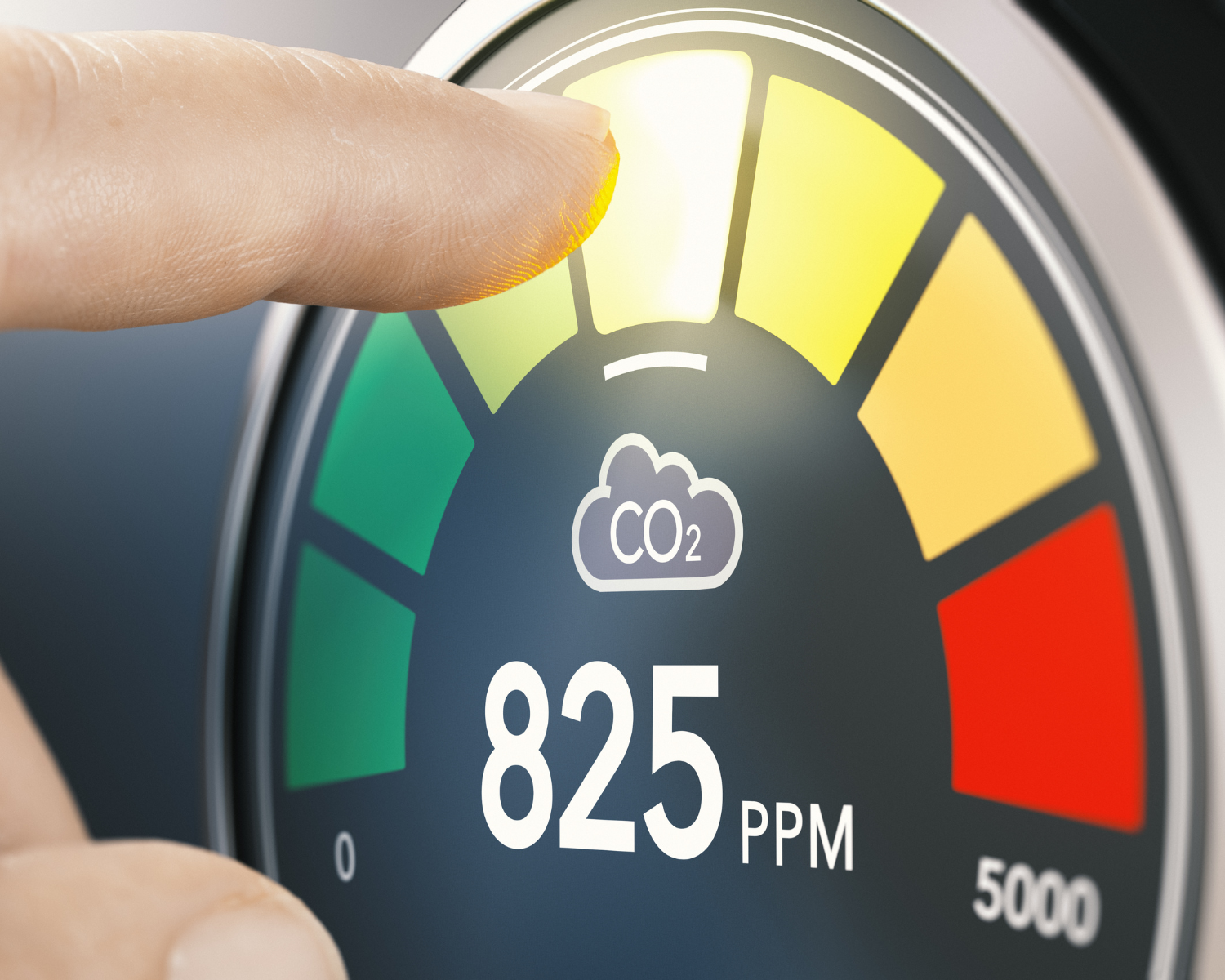Indoor air, don’t care?
Outdoor or ambient air pollution combined with indoor air pollution creates a heady atmosphere (literally) responsible for roughly 7 million premature deaths annually from stroke, ischemic heart disease (IHD), chronic obstructive pulmonary disease (COPD), lung cancer, and acute respiratory infections. In such a scenario, innovative solutions to improve air quality are indispensable for the health of humans and the environment.
With wildfires, vehicular emissions, and industrial activities visibly deteriorating our environments, outdoor air quality has attracted much-needed public attention over the past few years. Simultaneously, its lesser-known counterpart, indoor air pollution, is the dark horse we cannot afford to ignore. For years now, research has confirmed that with people spending 80 to 90% of their time indoors, indoor air pollution – from particulate matter (PM), volatile organic compounds (VOCs), carbon dioxide (CO2) and more – poses a greater risk to human health that outdoor air pollution.
Cleaning up our indoor air and making the spaces we occupy more livable and breathable is crucial, but before we can improve indoor air quality (IAQ), we need to take a few steps back to first monitor it, understand the sources emitting dangerous pollutants, and prevent exposure to them. Before coming up with the next big air quality innovative solutions, we need awareness.
Monitoring indoor air quality
Monitoring indoor air quality (IAQ) is a complex process that involves detecting multiple pollutant levels and conditions, i.e. IAQ parameters and recording readings, ideally in real-time. This is important because while chronic exposure to low levels of pollutants causes its fair share of harm to health, acute exposure to certain pollutants can also have disastrous effects. Monitoring IAQ fluctuations as and when they occur can alert building occupants to hazardous conditions and prevent detrimental health impacts.
IAQ monitoring methods and parameters: IAQ monitoring may be either continuous and real-time or discrete. While the former process involves using IAQ sensors to collect data 24/7, the latter offers a snapshot of indoor air quality at a specific point in time. Good IAQ monitoring systems track multiple parameters like PM2.5 and PM10 concentrations, CO2 levels, CO, VOCs, ozone and other pollutants as well as humidity, air exchange rate, and other factors associated with air quality indoors.
Recent research and trends in IAQ monitoring
While innovative solutions to improve air quality are the need of the hour, innovations in air quality monitoring systems are also necessary. To create indoor environments that allow for comfortable living and reduce the risks of developing severe disease, many researchers have explored different types of indoor environmental quality monitoring systems.
One group of researchers has developed a low-cost ZigBee sensor network architecture for real-time IAQ monitoring and data collection over periods of more than four weeks; this system analyses levels of CO2, benzene, NOx, and ammonia, but there is still scope for improvement in minimising power consumption and improving accuracy. Another group of researchers has created a portable, cost-effective PM imaging, quantification, and sizing model linked with a remote sensor and a mobile app, though assessing other types of pollutants may not be possible with this IAQ monitoring system. Multiple other research interventions focus on gaseous pollutants, leverage the benefits of machine learning (ML), showcase cost-efficiency, and contribute other advances to the field of IAQ monitoring.
Overall, a comprehensive review of these developments led researchers to uncover trends leaning towards Wireless Sensor Network (WSN) and Internet of Things (IoT) based models. While both models have their perks and pitfalls, IoT monitoring systems tend to be the most reliable air quality innovative solutions. IoT systems have lesser power consumption, better communication abilities, the ability to monitor several parameters, and lower maintenance requirements – all without compromising system performance. The icing on the cake is that it is also easier to combine IoT monitoring systems with ML and deep learning networks, providing scope for research in prediction systems in IAQ monitoring.
The gold standard
The necessity for continuous, real-time monitoring assumes special significance in a world that is dealing with multiple planetary-level crises triggered by climate change. Energy conservation in IAQ monitoring systems must balance first-rate air quality surveillance. Energy efficiency in terms of power consumption, design, installation and operation costs, and performance dependence on temperature and humidity are all important elements of the IAQ monitoring process that call for constant evolution.
A step-by-step guide to cleaner indoor air: Solutions to improve air quality
Once you have effective IAQ monitoring systems assessing the quality of your indoor air, there are many innovative solutions to improve air quality that you can adopt at different stages of building design, construction, occupancy, and maintenance. These range from employing passive design principles like natural ventilation to improving thermal insulation, mechanically cleaning mould, and getting regular professional building inspection and maintenance.
On the whole, when you or your organisation are occupying an indoor space, there is a general strategy that you can employ to protect yourself from indoor air pollution. After identifying the source of pollution and the specific pollutants you are dealing with, the American Lung Association recommends a three-step process of source control, ventilation, and indoor air cleaning.
Source control: While eliminating the source of indoor pollution (like incense, kerosene heaters, tobacco, aerosols, etc.) is the best way to go, sometimes that may not always be possible. In such cases, you can reduce and manage exposure to pollutants through simple measures like using a HEPA vacuum regularly, using exhaust fans in bathrooms and kitchens, and manually improving ventilation when using products containing chemicals or VOCs.
Ventilation: Outdoor air has two to five times fewer pollutants than indoor air. Diluting polluted indoor air by ventilating your space (via exhaust fans, opening windows, and other mechanisms) can help improve IAQ by reducing humidity, dust, odours, and other pollutants. Of course, ventilation can also introduce outdoor air pollutants into your indoor environment, so manual ventilation may not always be viable. HVAC systems introducing external air into a building after filtering it are alternative solutions to improve air quality.
Ventilation requirements differ for different types of buildings. Assessing the existing air exchange rate (either with the help of an HVAC (heating, ventilation, and air conditioning) technician or using calculators available online) can help you accurately assess your building’s ventilation requirements.
Air cleaning: After source control and ventilation, air cleaning or filtration can help reduce pollutants already in your air. Air cleaners are usually of two types: portable air filters and HVAC systems. HVAC systems clean pollutants from the air before circulating it through your building. This can be done by means of duct-mounted air cleaners or filters installed into central HVAC systems. Depending on the scale of air cleaning required, HVAC systems vary in complexity. Meanwhile, portable air cleaners or air purifiers are more appropriate for single-room use, with the best placement being where the most vulnerable occupants of a space spend most of their time. HEPA-rated filters are the best at getting the job done, while activated charcoal filters may be best for dealing with gaseous pollutants.
Simple but innovative solutions to improve air quality
Necessity is the mother of innovation. Even when commercial portable air purifiers or complex HVAC systems are not within reach, there are some innovative solutions to improve air quality that you can adopt at relatively low cost.
DIY purifiers: Do-it-yourself air purifiers are effective IAQ-improving solutions. All you need to construct one is a box fan, a furnace filter with a MERV rating of 13 or higher, tape, clamps or cords. The Environmental Protection Agency (EPA) confirms that fans are safe to use for this purpose when some basic precautions are adopted. The American Lung Association has a simple how-to guide to make your own DIY air purifier.
Indoor plants: The simplest solution within reach of almost everyone is getting indoor plants to clean up your air. Snake plants, areca palms, aloe vera, money plants, peace lilies, and common ivy are just some of the plants recommended for use to help reduce levels of CO2, NO2, benzene, formaldehyde, VOCs, and other indoor air pollutants.
All said and done, the most innovative solutions to improve air quality are futile unless you have quantifiable measures of IAQ improvements. Investing in top-notch indoor air quality monitors is the first and foundational step towards building cleaner and more livable indoor spaces for healthier and happier humans.




Leave a Reply